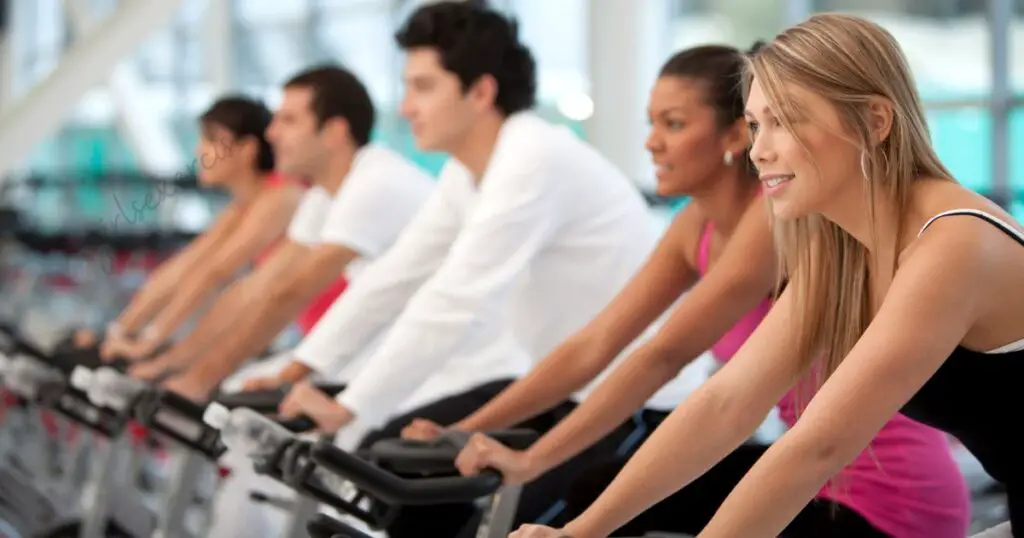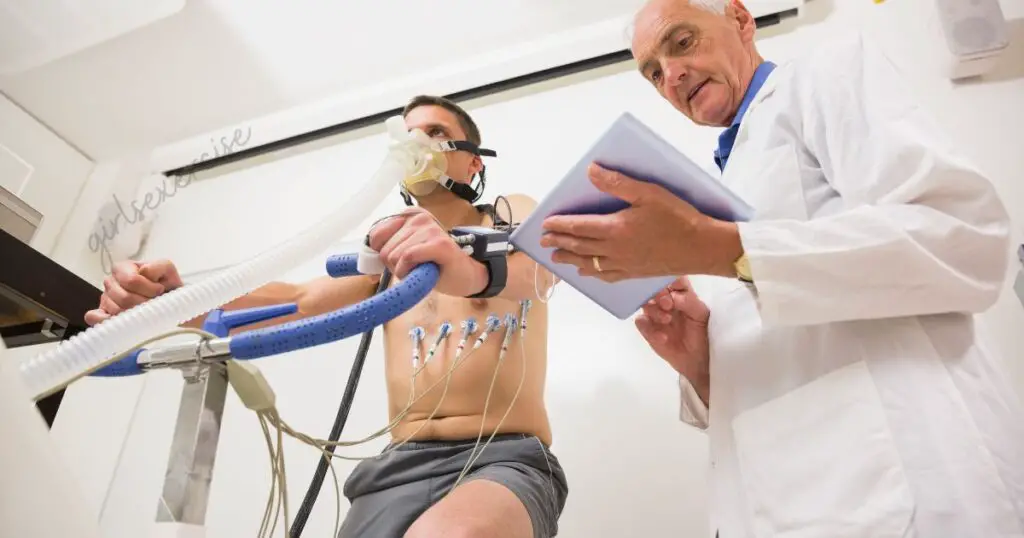Cycling, a popular and accessible form of physical activity, offers numerous benefits for both body and mind. Many enthusiasts and health-conscious individuals often wonder, “What does cycling do to the body?” This intriguing question serves as a gateway to exploring the myriad ways in which cycling positively impacts our physical health, from cardiovascular improvements and muscle development to enhanced mental well-being. In this discussion, we will delve into the transformative effects of cycling on the human body, shedding light on the remarkable advantages this activity can bring to individuals of all fitness levels.
The Popularity of Cycling
Cycling has gained immense popularity in recent years, not only as a mode of transportation but also as a recreational activity. More and more people are embracing cycling as an integral part of their lives. Whether it’s for commuting to work, running errands, or simply enjoying leisurely rides, cycling has become a preferred choice for individuals of all ages and backgrounds. The charm of cycling lies not just in its environmental friendliness and affordability, but also in the sense of freedom and exploration it offers.
The Health Benefits of Cycling
Beyond its rising popularity, cycling is celebrated for its myriad health benefits. This article will delve into the positive impacts it has on the human body. From cardiovascular improvements that strengthen your heart and reduce the risk of heart disease, to respiratory benefits that enhance lung function and capacity, cycling is a holistic approach to better health. Moreover, it aids in weight management, fosters joint and bone health, and contributes to mental and emotional well-being. Join us on this journey as we explore the incredible ways in which cycling can transform your health and lifestyle.
Physical Effects of Cycling

Cycling is a fantastic way to boost your overall physical health, with profound benefits for your cardiovascular system and respiratory well-being.
Cardiovascular Health:
Improved Heart Health: When you ride a bicycle regularly, you’re giving your heart a wonderful workout. The steady, rhythmic motion of pedaling helps strengthen your heart, making it more efficient at pumping blood throughout your body. Over time, this can lead to a healthier and more robust heart.
Reduced Risk of Heart Disease: Cycling has been shown to significantly reduce the risk of heart disease. It helps lower levels of bad cholesterol (LDL) and triglycerides while increasing good cholesterol (HDL). This balance is vital for heart health. Additionally, cycling can reduce high blood pressure, a known risk factor for heart disease, by keeping it in check.
Respiratory Benefits
Enhanced Lung Function: When you cycle, your lungs get a thorough workout. The increased oxygen demand during a ride helps improve lung function. You’ll find that your lung capacity increases, allowing you to take in more oxygen with each breath. This can lead to better overall respiratory health and the ability to breathe more easily.
Increased Lung Capacity: Cycling also enhances your lung capacity. Your lungs adapt to the increased demand for oxygen during rides, and this can result in a larger lung capacity. A larger lung capacity means you can take in more air, which is particularly helpful during strenuous activities or situations where you need extra oxygen.
In essence, when you incorporate cycling into your routine, you’re doing your heart and lungs a great favor. It not only improves their strength but also significantly reduces the risk of heart disease and helps them breathe more efficiently. So, hop on your bike and enjoy the benefits it brings to your cardiovascular and respiratory health!
Mental and Emotional Well-being

Stress Reduction
When you hop on a bicycle and start pedaling, you’re not just working your leg muscles; you’re also engaging in a powerful stress-relief activity that can significantly enhance your overall emotional well-being. Here’s how it works:
Release of Endorphins: Cycling triggers the release of endorphins, which are often referred to as “feel-good” hormones. These natural chemicals act as your body’s own mood elevators, reducing stress and promoting a sense of well-being. As you cycle, your brain releases endorphins, creating a natural high that can help you combat feelings of anxiety, tension, and stress. The more you ride, the more endorphins you produce, contributing to an ongoing sense of positivity and calm.
Improved Mood: Cycling isn’t just about physical exercise; it’s also a mental escape. As you pedal along, you have time to clear your mind, contemplate, and reflect. This mental break allows you to distance yourself from daily worries and focus on the present moment. It’s a form of meditation in motion, promoting mindfulness and relaxation. Additionally, the physical exertion during cycling can help your body manage stress more effectively. It lowers the levels of stress hormones like cortisol, further improving your mood and reducing the tension you might be carrying.
In summary, cycling offers a dual approach to stress reduction. It stimulates the release of endorphins, which provide an immediate mood boost, and it creates a calming environment that promotes mental well-being. Whether you’re cycling through serene landscapes or simply enjoying the freedom of the open road, the act of cycling can be a soothing and stress-relieving experience, benefiting.
Muscular Strength and Endurance
When it comes to the impact of cycling on your muscular strength and endurance, let’s focus on your leg muscles, which play a vital role in this exercise.
Leg Muscles
Quadriceps and Hamstrings
Cycling significantly engages your quadriceps and hamstrings, which are the muscles at the front and back of your thighs, respectively. As you pedal, your quadriceps work to extend your knee and push the pedal downward, while your hamstrings flex your knee and pull the pedal back up during the pedal stroke. This continuous action not only strengthens these muscle groups but also helps to improve their endurance over time. Strong quadriceps and hamstrings provide you with the power needed for faster and more efficient cycling, making it easier to conquer hills and long rides.
Calf Muscles
Your calf muscles, located in the lower part of your legs, are also actively engaged during cycling. These muscles help to point your toes downward as you pedal, adding another dimension to your pedaling motion. Over time, cycling helps tone and strengthen your calf muscles, leading to improved muscular endurance. This not only benefits your cycling performance but also contributes to better overall leg stability and posture.
Metabolic Improvements

Regulation of Blood Sugar
Cycling plays a significant role in regulating blood sugar levels, which can have far-reaching health benefits. Here’s a closer look at how it impacts your metabolic health:
Reduced Risk of Diabetes:
Regular cycling helps reduce the risk of developing diabetes. This is particularly important in preventing Type 2 diabetes, as it enhances the body’s ability to manage blood sugar. When you engage in cycling, your muscles use glucose for energy, effectively lowering elevated blood sugar levels and reducing the strain on your pancreas to produce insulin. This decrease in blood sugar levels and improved insulin sensitivity can contribute to a decreased risk of diabetes over time.
Enhanced Insulin Sensitivity:
Cycling not only reduces the risk of diabetes but also enhances insulin sensitivity. Insulin sensitivity is a critical factor in how efficiently your body processes glucose. When you cycle regularly, your muscle cells become more receptive to insulin, allowing them to absorb glucose from the bloodstream more effectively. This heightened sensitivity means your body can maintain stable blood sugar levels with less insulin, which is particularly beneficial for those with insulin resistance or prediabetes.
Cycling’s impact on metabolic health includes a reduced risk of diabetes and improved insulin sensitivity, which together help maintain healthier blood sugar levels and contribute to overall well-being.
Immune System Enhancement
Reduced Inflammation
In the world of cycling and its impact on your body, one remarkable benefit is the reduction of inflammation. This process plays a pivotal role in promoting overall health and well-being. Let’s delve into this with a friendly tone, shall we?
Immune Response Improvement
Cycling has a way of fine-tuning your body’s immune response. When you engage in regular cycling, your immune system becomes more efficient at recognizing and addressing potential threats. This means your body is better equipped to ward off infections and illnesses. It’s like giving your immune system a friendly nudge to perform at its best.
Decreased Infection Risk
By consistently cycling, you’re not only enhancing your immune system’s response but also lowering your risk of infections. When inflammation is reduced, it lessens the likelihood of pathogens gaining a foothold in your body. You become more resilient to common infections, making cycling an excellent choice for bolstering your body’s defenses.
In a nutshell, cycling is your immune system’s best friend. It fine-tunes its response, reduces inflammation, and decreases the risk of infections, leaving you feeling healthier and more capable of warding off those pesky bugs and germs. Happy cycling, and stay well!
Longevity and Aging

We all want to feel young and vibrant for as long as possible, and cycling can play a remarkable role in achieving this goal. Here’s how:
Slowing the Aging Process
Telomere Protection: Telomeres are like the protective caps on the ends of shoelaces, but in this case, they’re on the ends of our DNA strands. Over time, these telomeres naturally wear down, contributing to the aging process. Cycling has been shown to help protect these telomeres, effectively slowing down this natural deterioration. So, when you cycle regularly, you’re essentially helping to maintain the youthful vitality of your cells.
Cellular Renewal: Think of your body as a well-oiled machine. The more you use it, the better it performs, and cycling is one of the best ways to keep your body’s machinery in top shape. When you cycle, your body goes through a process of cellular renewal. This means that older, worn-out cells are replaced by fresh, vibrant ones. It’s like hitting the reset button on your body, allowing you to enjoy a more youthful and active lifestyle for longer.
In essence, cycling not only keeps your body physically fit but also helps you maintain your youthful vigor by preserving your DNA’s integrity and promoting the renewal of your body’s cells. So, not only will you feel better and look better, but you’ll also be defying the aging process in a friendly and enjoyable way.
Effect on Hormones
Cycling can have a significant impact on hormone regulation in the body, contributing to overall hormonal balance. This balance is essential for various bodily functions and overall well-being. Here’s a closer look at how cycling affects hormones:
Hormonal Balance
Regulation of Cortisol:
When you engage in regular cycling, your body experiences better control over the hormone cortisol, often referred to as the “stress hormone.” Cycling is an excellent stress reliever, and as you pedal away, your body naturally releases endorphins, which help to reduce stress and anxiety. This, in turn, leads to a decrease in cortisol levels. Lower cortisol levels mean that your body is less likely to be in a constant state of stress, which can have numerous positive effects on your health, including improved mental clarity, reduced anxiety, and even better sleep quality.
Balanced Hormones:
Cycling contributes to the overall hormonal equilibrium in your body. Regular physical activity, such as cycling, helps your body maintain healthy levels of various hormones, such as adrenaline, and insulin, and sex hormones like estrogen and testosterone. Balanced hormones are essential for overall well-being, as they affect your mood, energy levels, and even your reproductive health. For women, cycling can also help regulate the menstrual cycle and alleviate some common menstrual symptoms.
In summary, cycling plays a role in regulating cortisol, reducing stress, and promoting balanced hormone levels, which can have a positive impact on your mental and emotional well-being, as well as your overall health.
Pain Management
One of the remarkable benefits of cycling is its positive impact on pain management. Whether you’re dealing with chronic pain or specific conditions like arthritis and fibromyalgia, hopping on a bicycle can offer substantial relief.
Reduction of Chronic Pain
Cycling can be a game-changer for individuals suffering from chronic pain. Here’s how it can help:
Arthritis Relief:
Arthritis, a condition marked by joint inflammation and pain, often limits mobility. Cycling, being a low-impact exercise, provides an excellent way to keep joints moving without causing excessive strain. The smooth, circular motion of pedaling helps lubricate the joints, alleviating the stiffness and discomfort associated with arthritis. Over time, consistent cycling can lead to increased joint flexibility and reduced pain levels.
Fibromyalgia Improvement:
Fibromyalgia is a complex and often debilitating condition characterized by widespread musculoskeletal pain, fatigue, and tender points. Cycling can aid in managing fibromyalgia symptoms by improving muscular strength and overall fitness. The endorphins released during cycling can help mitigate pain perception, and the gentle, rhythmic movement of pedaling can reduce muscle tension. Regular cycling as part of a balanced fitness routine may lead to increased stamina and a reduction in fibromyalgia-related discomfort, allowing individuals to enjoy a higher quality of life.
Incorporating cycling into your daily routine can be a gentle, yet effective way to address chronic pain, providing relief and improving your overall well-being. It’s important to consult with a healthcare professional before starting any new exercise regimen, especially if you have existing health conditions, to ensure that cycling is safe and suitable for your specific needs.
Environmental Impact
In the ever-evolving world we live in, it’s imperative that we consider the impact of our actions on the environment. Cycling offers us a beautiful opportunity to make a positive difference, and it’s worth diving into the details of how it contributes to sustainability.
Sustainability
When we talk about sustainability in the context of cycling, we’re really delving into the heart of eco-friendliness. Let’s explore this concept further:
Eco-Friendly Commuting
Cycling is one of the most eco-friendly modes of transportation available. Unlike cars that spew harmful emissions into the atmosphere, bicycles produce zero emissions. By choosing to commute on two wheels instead of four, you’re actively participating in reducing air pollution and contributing to cleaner, healthier air for everyone.
But it goes beyond that. The production of bicycles also has a lower carbon footprint compared to the manufacturing of cars, making them an environmentally conscious choice from the very beginning.
Reducing Carbon Footprint
Your carbon footprint is essentially the total amount of greenhouse gases, particularly carbon dioxide (CO2), that you generate through your activities. One of the most significant advantages of cycling is its ability to dramatically reduce your carbon footprint. Here’s how:
When you opt for cycling over driving, you’re cutting down on the CO2 emissions that come from burning fossil fuels. You’re not contributing to the ever-growing greenhouse gas levels in the atmosphere that are responsible for climate change. By reducing your reliance on cars, you’re directly combatting global warming and helping to slow down the planet’s temperature rise.
The reduced need for parking lots, wider roads, and other car-centric infrastructure means we use less land and resources, further decreasing our ecological impact.
So, when you choose to ride your bicycle instead of driving, you’re making a friendly and impactful step towards sustainability, and ultimately, a healthier planet for all. Your small contribution can create a ripple effect of positive change for our environment.
FAQs About WHAT DOES CYCLING DO TO THE BODY
What muscles does cycling work?
Cycling is a fantastic full-body workout that primarily targets your leg muscles, like the quadriceps and hamstrings. But it’s not just your legs getting the love; your glutes, calves, and even your core muscles get in on the action too. So, hop on that bike for a total leg day!
Can cycling help with weight loss?
Absolutely! Cycling can be your ticket to shredding some extra pounds. When you pedal away, you burn calories like a champ. Plus, it’s easy on your joints, making it an excellent choice for those who want to lose weight without pounding the pavement.
How does cycling benefit the cardiovascular system?
Cycling is like a love letter to your heart. It boosts your cardiovascular fitness by improving your heart’s efficiency in pumping blood. Your blood vessels get a workout too, as they expand to deliver more oxygen and nutrients to your muscles, which is like a little party for your circulatory system.
Does cycling improve mental health?
You bet! Riding your bike is like therapy on two wheels. It releases those feel-good endorphins, reduces stress, and clears your mind. The wind in your hair, the open road, and the sense of freedom can lift your spirits like a sunny day.
Is cycling gentle on the joints?
Indeed, cycling is a low-impact sport. It’s easy on the joints, making it ideal for folks with knee or joint issues. You can get that adrenaline rush without the pounding, ensuring your joints stay happy and healthy.




1 thought on “WHAT DOES CYCLING DO TO THE BODY”